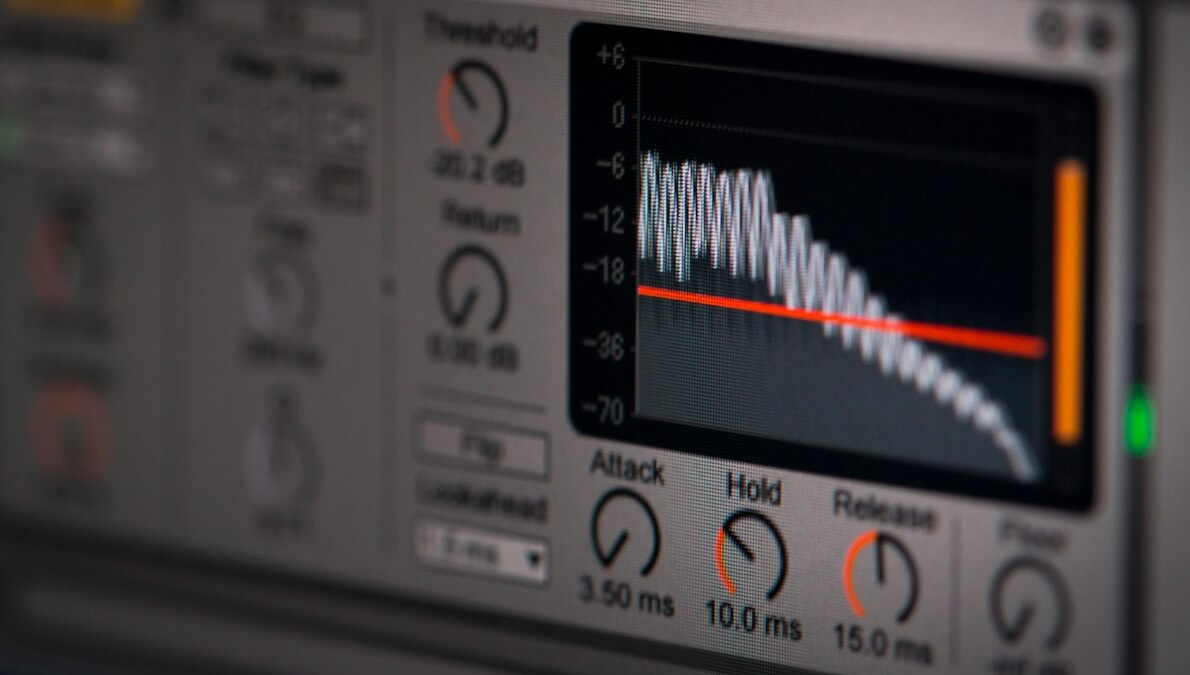Analizador y Normalizador de Sonoridad
Comprueba EBU R128 y otras normas
Utiliza esta herramienta para verificar que tu mezcla de audio cumple una norma específica. La herramienta generará un informe de sonoridad a partir del archivo cargado. También puede normalizar un archivo de audio y hacer que se ajuste a una norma de tu elección.

cargando...
Normas de sonoridad
LUFS (Loudness Units relative to Full Scale) se utiliza para medir la sonoridad del contenido de audio. Existe una amplia gama de normas y valores para los distintos formatos de transmisión. La tabla siguiente ofrece una visión general.
| Platform | LUFS (Integrated Loudness) | True Peak (dBTP) | Loudness Range (LRA) |
|---|---|---|---|
| Streaming (e.g., Spotify) | -14 LUFS | -1 dBTP | 7-10 LU |
| YouTube & Vimeo | -14 LUFS | -1 dBTP | 6-8 LU |
| TV Broadcast (US, ATSC A/85) | -24 LUFS | -2 dBTP | 4-7 LU |
| TV Broadcast (EU, EBU R 128) | -23 LUFS | -1 dBTP | 5-10 LU |
| TV Advertising | -24 to -20 LUFS | -2 dBTP | 4-7 LU |
| Online Content (General) | -16 to -14 LUFS | -1 dBTP | 6-8 LU |
| Mobile | -16 LUFS | -1 dBTP | 6-8 LU |
| VOD (Video on Demand, e.g. Netflix) | -24 LUFS | -2 dBTP | 5-10 LU |
| Cinema | -27 to -24 LUFS | -3 to -6 dBTP | 15-20 LU |
| Podcasts | -16 LUFS | -1 dBTP | 6-8 LU |
| DVD/Blu-ray | -27 LUFS | -3 dBTP | 10-15 LU |
| Radio | -16 LUFS | -1 dBTP | 6-10 LU |
TV Broadcast
U.S. TV follows the ATSC A/85 standard and targets -24 LUFS, while Europe follows EBU R 128 and targets -23 LUFS, both with a true peak of -1 to -2 dBTP to prevent distortion and ensure broadcast quality.
Cinema
Cinema audio typically has a much wider dynamic range, allowing for very quiet moments and very loud moments. Still, true peak levels should not exceed -3 dBTP to -6 dBTP.
YouTube and other Video Platforms
Similar to streaming platforms, these platforms also aim for -14 LUFS for consistency and to avoid drastic changes in volume from one video to the next.
Streaming
To ensure consistency across content types, streaming platforms such as Spotify have standardized on -14 LUFS.
TV Commercials
TV commercials are typically louder than regular TV content to attract attention, often falling between -24 and -20 LUFS.
VOD
Video-on-demand services closely follow broadcast TV standards, typically around -24 LUFS with a similar true peak.
Podcasts
Podcasts are targeted at -16 LUFS for clear and consistent playback across devices. This is similar to mobile content.
DVD/Blu-ray
Physical media such as DVDs and Blu-rays target -27 LUFS to maintain high dynamic range and theater-like audio quality.
Radio
Radio broadcasts typically aim for -16 LUFS to ensure clear audio in various listening environments and signal strengths.

Niveles de tolerancia
En Europa, la norma EBU R128 tiene una tolerancia permitida de ±1 LU, lo que significa que es aceptable una desviación de hasta 1 LUFS por encima o por debajo del valor objetivo. En EEUU, según el ATSC A/85, la tolerancia es de ±2 LUFS. Para las producciones cinematográficas, no hay un objetivo fijo de LUFS, pero una sonoridad típica puede estar entre -27 y -24 LUFS. Spotify tiene un objetivo de sonoridad de -14 LUFS, sin tolerancia explícita, pero el contenido que se desvía significativamente suele ajustarse automáticamente. YouTube también tiene como objetivo -14 LUFS, y los contenidos que superan este valor se ajustan automáticamente.
La tolerancia concreta puede depender de las políticas del servicio o plataforma, pero en general los valores objetivo deben cumplirse para garantizar la mejor calidad y coherencia de audio.
Get more with Pro
Si necesitas analizar o normalizar archivos más largos, más archivos o formatos diferentes, necesitarás una cuenta Pro. Esto también te permite obtener procesamiento prioritario y acceso a muchas otras herramientas y funciones.
Check out all Pro Features| Free | Pro Users |
|---|---|
| Files up to 60 minutes | No length limit |
| up to 5 files a day | No daily upload limit |
| up to 2GB | up to 2GB |
| .mp3, .wav, .m4a, .acc | .mp4, .mp3, .wav, .m4a, .acc, .wma, .aiff, .ogg, .flac |